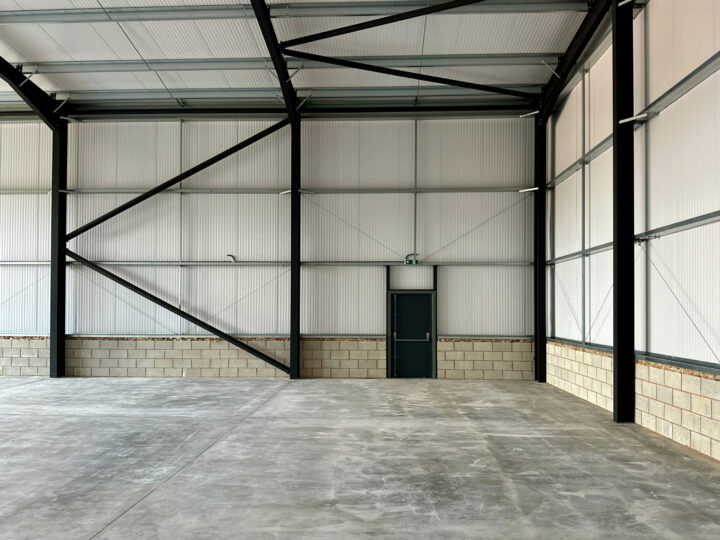In the dynamic world of property investments, the choice between commercial and residential properties is a critical decision for investors. While residential buy-to-lets have been traditionally popular, an increasing number of investors are now turning towards commercial investments, such as small multifunctional industrial units, for several compelling reasons. We explore the benefits of investing in commercial real estate over residential properties, considering factors like tax advantages, management benefits, and overall return on investment.
1. Stamp Duty Benefits
One of the significant financial incentives for opting for commercial investments over residential properties relates to the treatment of Stamp Duty Land Tax (SDLT) in the UK. Commercial properties generally benefit from lower stamp duty rates compared to their residential counterparts, especially at higher price points. This can lead to substantial savings at the time of purchase.
Moreover, the UK government imposes an additional stamp duty surcharge on residential properties if they are considered secondary properties (i.e. additional homes). This surcharge significantly increases the total cost of acquiring residential investment properties. For example, buying a second home attracts an extra 3% SDLT on top of the standard rate, escalating the initial financial burden. This surcharge does not apply to commercial properties, making them a more cost-effective option right from the acquisition stage. Such tax efficiencies are crucial in the strategic planning and budgeting phases of property investment, making commercial real estate an increasingly attractive option for investors aiming to maximise their returns while minimising upfront expenditures.
2. Capital Allowances
Commercial properties offer the advantage of capital allowances, allowing investors to offset the costs of certain fixtures, fittings, and renovations against their taxable income. This can significantly reduce the tax burden, enhancing the overall profitability of the investment.
Residential properties do not typically offer this benefit, which can make commercial investments more appealing from a tax perspective.
3. Reduced Management Requirements
Commercial properties typically require less day-to-day management compared to residential buy-to-lets, allowing for a more hands-off investment approach. This difference is primarily due to the nature of commercial leases, which are often structured such that the tenant assumes responsibility for a significant portion of property maintenance and repairs during the lease term. Additionally, commercial tenants are generally required to return the property in the same condition as it was when they took possession, subject to normal wear and tear. This concept, known as ‘dilapidations,’ acts as a safeguard for landlords, ensuring that the property is maintained properly throughout the tenancy without the landlord needing to intervene regularly.
This contrasts with residential properties, where landlords are frequently called upon to handle maintenance, upgrades, and repairs. Residential properties typically endure more frequent wear and tear, necessitating constant attention and financial input from the landlord to keep the property in good condition and adhere to housing regulations. This ongoing requirement can significantly increase the management burden and reduce the net profitability of residential buy-to-lets. In contrast, the commercial arrangement often results in lower operational costs and less personal involvement for the property owner, making commercial investments more appealing for those looking for a more manageable and cost-effective property investment solution.
4. Dilapidations and Tenant Contributions
At the end of a commercial lease, the property is often left in the condition it was let, known as ‘dilapidations,’ which can be less onerous for the owner compared to residential properties. Additionally, a significant proportion of commercial tenants invest in the premises by installing mezzanines or offices, thereby increasing the value and functionality of the property at no extra cost to the landlord.
5. Long-Term Leases
Commercial properties typically benefit from longer lease agreements, which provide a steady, predictable income stream and reduce the frequency of tenant turnover. This stability is a significant advantage over residential buy-to-lets, where shorter lease periods and higher tenant turnover can lead to greater vacancy rates and fluctuating incomes.
6. RPI Rent Increases
Rent in commercial leases is often linked to the Retail Price Index (RPI), allowing for periodic, inflation-linked increases. This arrangement ensures that rental income keeps pace with inflation, protecting the real value of the income over time and offering a more reliable growth in revenue than is typically possible with residential leases.
7. Capital Value Increase
Commercial properties generally offer excellent capital value appreciation, driven by factors like location, tenant improvements, and developments in the surrounding area. The potential for significant capital gains can be higher compared to residential properties, especially in burgeoning industrial and commercial districts.
8. Tenant Investments
Around 90% of commercial tenants make structural or interior investments in their leased spaces, which can enhance the property’s value and utility. Such tenant contributions are rare in residential properties, where changes are often limited to cosmetic alterations. This factor can significantly influence the long-term appreciation of commercial properties.
Conclusion
The decision to invest in commercial rather than residential properties involves considering various factors, including tax implications, ownership benefits, and management issues. Commercial investments offer substantial advantages in these areas, making them an attractive option for those looking to diversify their investment portfolio or secure a more stable, profitable property investment solution.
As the market continues to evolve, potential investors should consult with real estate professionals and tax advisors to fully understand the benefits and implications of their investment choices. Commercial real estate, with its myriad advantages, stands out as a promising option for many investors.










